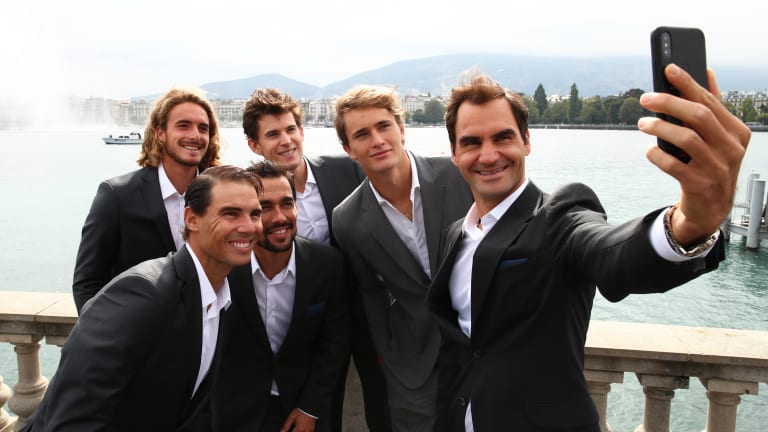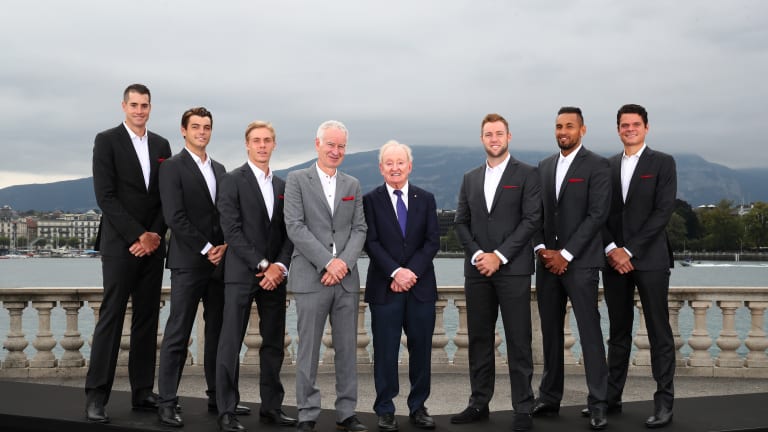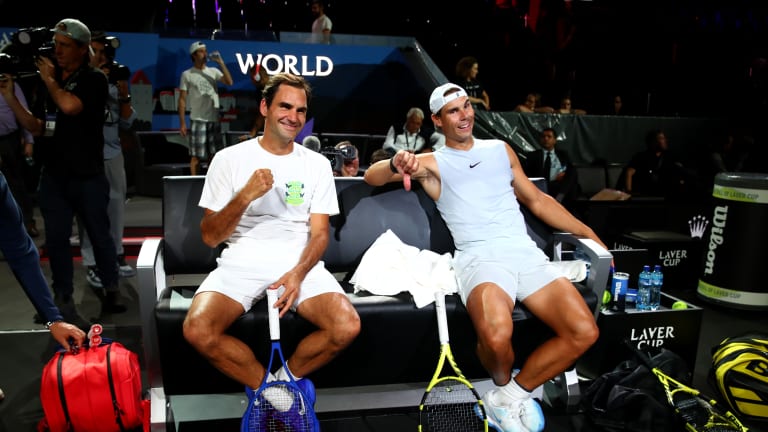Why does Europe dominate the Laver Cup, and men's tennis at large?
By Sep 19, 2019Social
Big 3 salutes their retiring 'friend' Joao Sousa in Estoril
By Apr 07, 2024Social
Roger Federer to deliver commencement speech at Dartmouth College
By Mar 28, 2024Miami, USA
Top 5 Miami Finals, No. 1: Roger Federer d. Rafael Nadal, 2005
By Mar 27, 2024Social
Coco Gauff wants to play as the Big Three after TopSpin 2K25 unveils full player roster
By Mar 23, 2024Lifestyle
Roger Federer opens up on retirement to GQ: He doesn't miss pro tennis, but hitting a forehand is 'like riding a bike'
By Mar 15, 2024Indian Wells, USA
Top 5 Indian Wells Finals, No. 4: Dominic Thiem d. Roger Federer, 2019
By Mar 13, 2024Pop Culture
Carlos Alcaraz can’t wait to “play as myself” in upcoming TopSpin 2K25 tennis video game
By Mar 13, 2024Pop Culture
Roger Federer is California dreamin' as he takes in Golden State Warriors game, attends Oscars
By Mar 10, 2024Lifestyle
Roger Federer wraps up whirlwind tour of Thailand while Uniqlo shares his favorite stops in Shanghai
By Mar 05, 2024Why does Europe dominate the Laver Cup, and men's tennis at large?
Even if The World manages to win their first Laver Cup this weekend, the Europe appears set to keep conquering the world of men’s tennis for the foreseeable future.
Published Sep 19, 2019
Advertising

Why does Europe dominate the Laver Cup, and men's tennis at large?
© Getty Images for Laver Cup
Advertising

Why does Europe dominate the Laver Cup, and men's tennis at large?
© Getty Images for Laver Cup
Advertising

Why does Europe dominate the Laver Cup, and men's tennis at large?
© Getty Images for Laver Cup
Advertising

Why does Europe dominate the Laver Cup, and men's tennis at large?